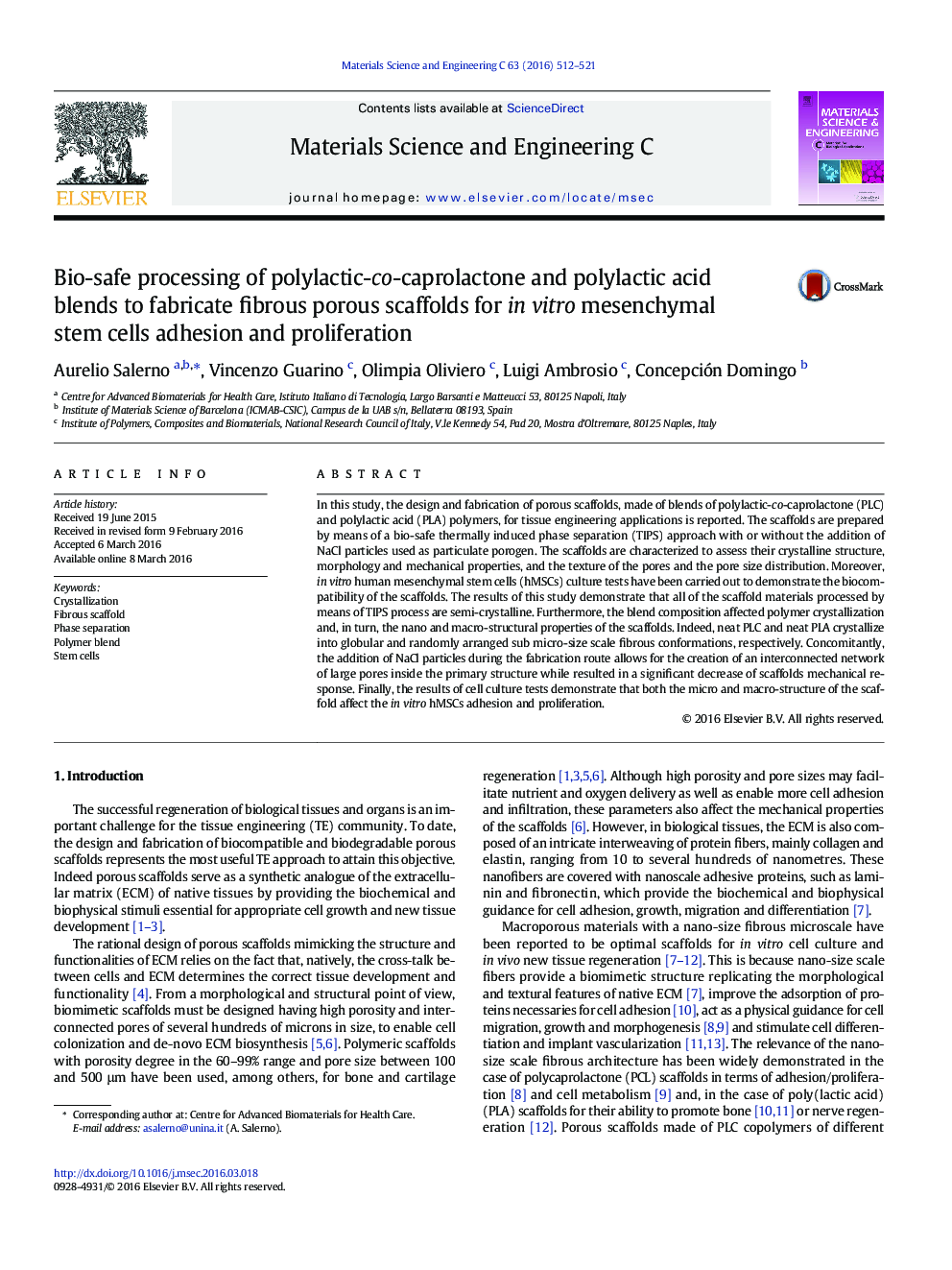| کد مقاله | کد نشریه | سال انتشار | مقاله انگلیسی | نسخه تمام متن |
|---|---|---|---|---|
| 1428044 | 1509158 | 2016 | 10 صفحه PDF | دانلود رایگان |

• Porous scaffolds are prepared by polymer blending, phase separation and NaCl leaching.
• The process avoids the use of toxic solvents.
• Blend composition dictates polymer crystallization and scaffold properties.
• Scaffolds are provided of a sub micro-scale fibers structure and interconnected macropores.
• Stem cells adhesion and proliferation depend on scaffolds composition and structure.
In this study, the design and fabrication of porous scaffolds, made of blends of polylactic-co-caprolactone (PLC) and polylactic acid (PLA) polymers, for tissue engineering applications is reported. The scaffolds are prepared by means of a bio-safe thermally induced phase separation (TIPS) approach with or without the addition of NaCl particles used as particulate porogen. The scaffolds are characterized to assess their crystalline structure, morphology and mechanical properties, and the texture of the pores and the pore size distribution. Moreover, in vitro human mesenchymal stem cells (hMSCs) culture tests have been carried out to demonstrate the biocompatibility of the scaffolds. The results of this study demonstrate that all of the scaffold materials processed by means of TIPS process are semi-crystalline. Furthermore, the blend composition affected polymer crystallization and, in turn, the nano and macro-structural properties of the scaffolds. Indeed, neat PLC and neat PLA crystallize into globular and randomly arranged sub micro-size scale fibrous conformations, respectively. Concomitantly, the addition of NaCl particles during the fabrication route allows for the creation of an interconnected network of large pores inside the primary structure while resulted in a significant decrease of scaffolds mechanical response. Finally, the results of cell culture tests demonstrate that both the micro and macro-structure of the scaffold affect the in vitro hMSCs adhesion and proliferation.
Figure optionsDownload as PowerPoint slide
Journal: Materials Science and Engineering: C - Volume 63, 1 June 2016, Pages 512–521